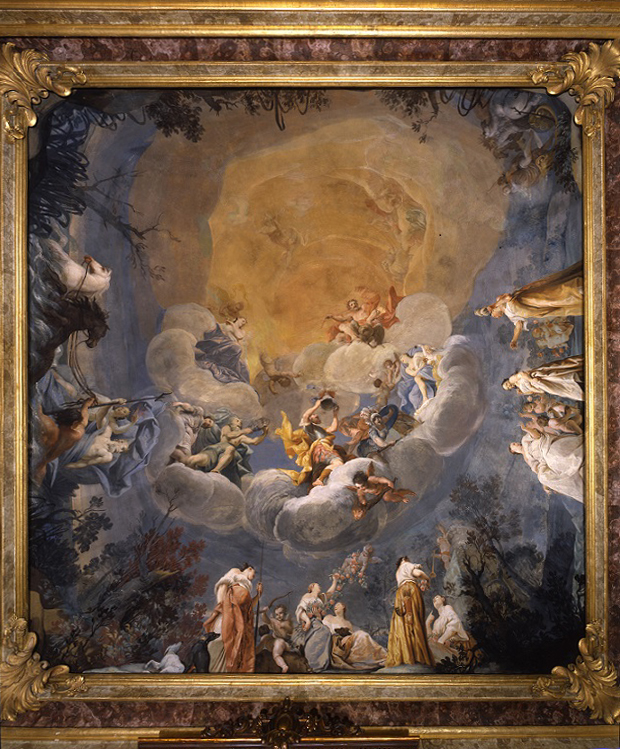
After the decoration of the Seasons Room, in the same period (1699-1700), Giuseppe Maria Crespi painted also the vault of this room, probably a bridal chamber.
Here the process of distanting from the Bolognese tradition of the "quadrature" frescoes is completed: there is no prospectical painted architecture and the vault is entirely occupied by a natural landscape. The set is a mix of both sea-side and woodland backgrounds, all played in refined grey tones that in the sky are lighted in orange and yellow hues. Crespi depicted the Olympus Gods: on the top the Sun Chariot, hauled by flying Apollo and Mercury. In the center of the valut, Jupiter and Juno and below them two sea Gods, maybe Thetis and Ocean, offering a chess shell to Jupiter. Then Mars taking off his helmet, Minerva with her armour, Love with a burning torch and Venus with the Pepoli's araldic swan sitting on her lap.
In the band just over the ledge we can see Neptun, the Sea God, hauled by two black and white horses, together with his wife Amphitrite, holding a branch of auspicious red coral; Diane and her nymphs, with their black and white dogs resting after an hunting party, while in a corner Pluto abducts Proserpine to take her in the Underworld. On the right, the Three Parcae (Clotho, Lachesis and Atropos), the goddesses that directed the human destiny remind us that the mithological fables, just as the earthly Fame, are beautiful but transitory, just like the soap bubble blowed by the kid in the background. Usually the three goddes are represented as ugly and old women, but here they are painted as thriving young ladies reminding the visitor how fleeting the human life is, hanging by a thred that Atropo, with her micking smile, is ready to cut.







